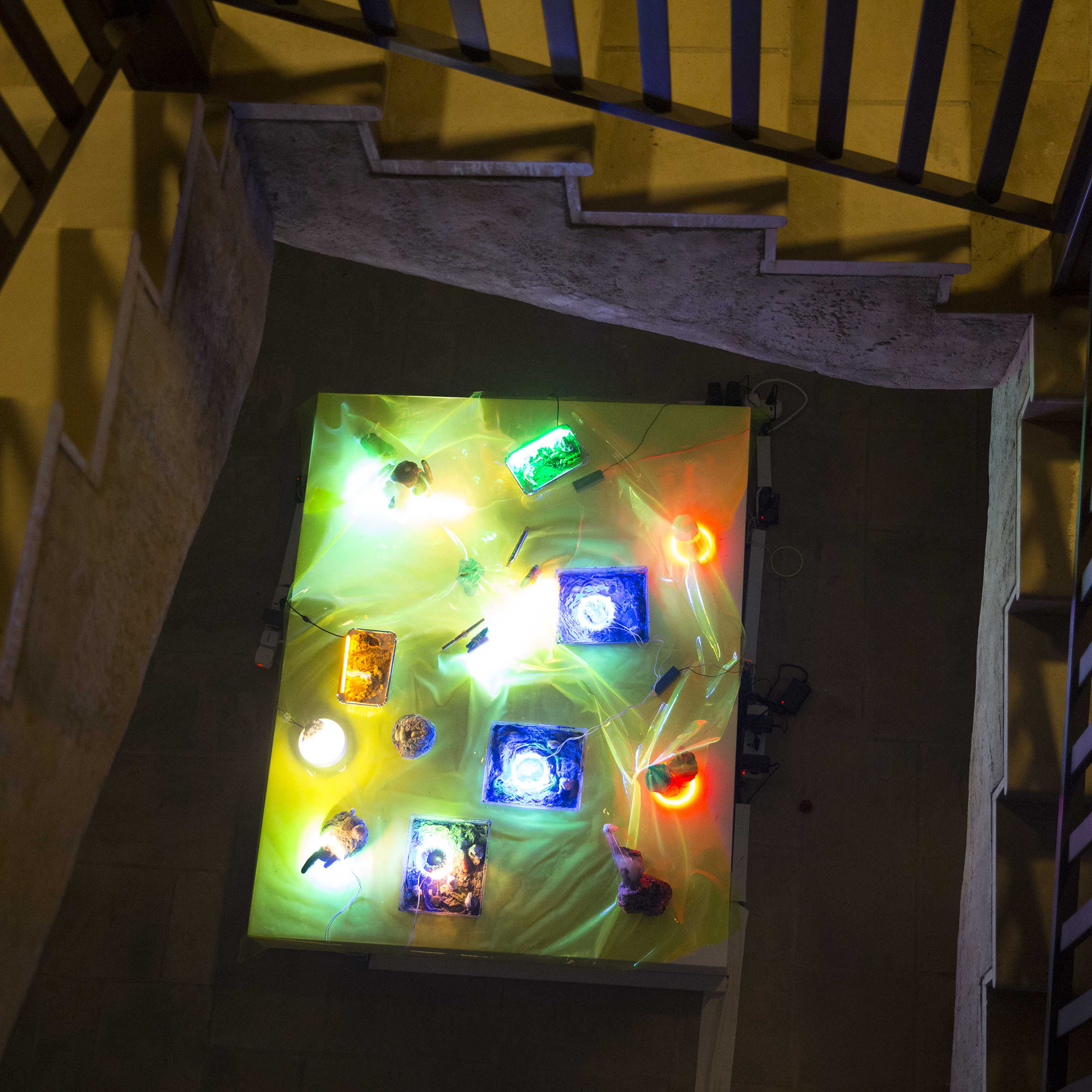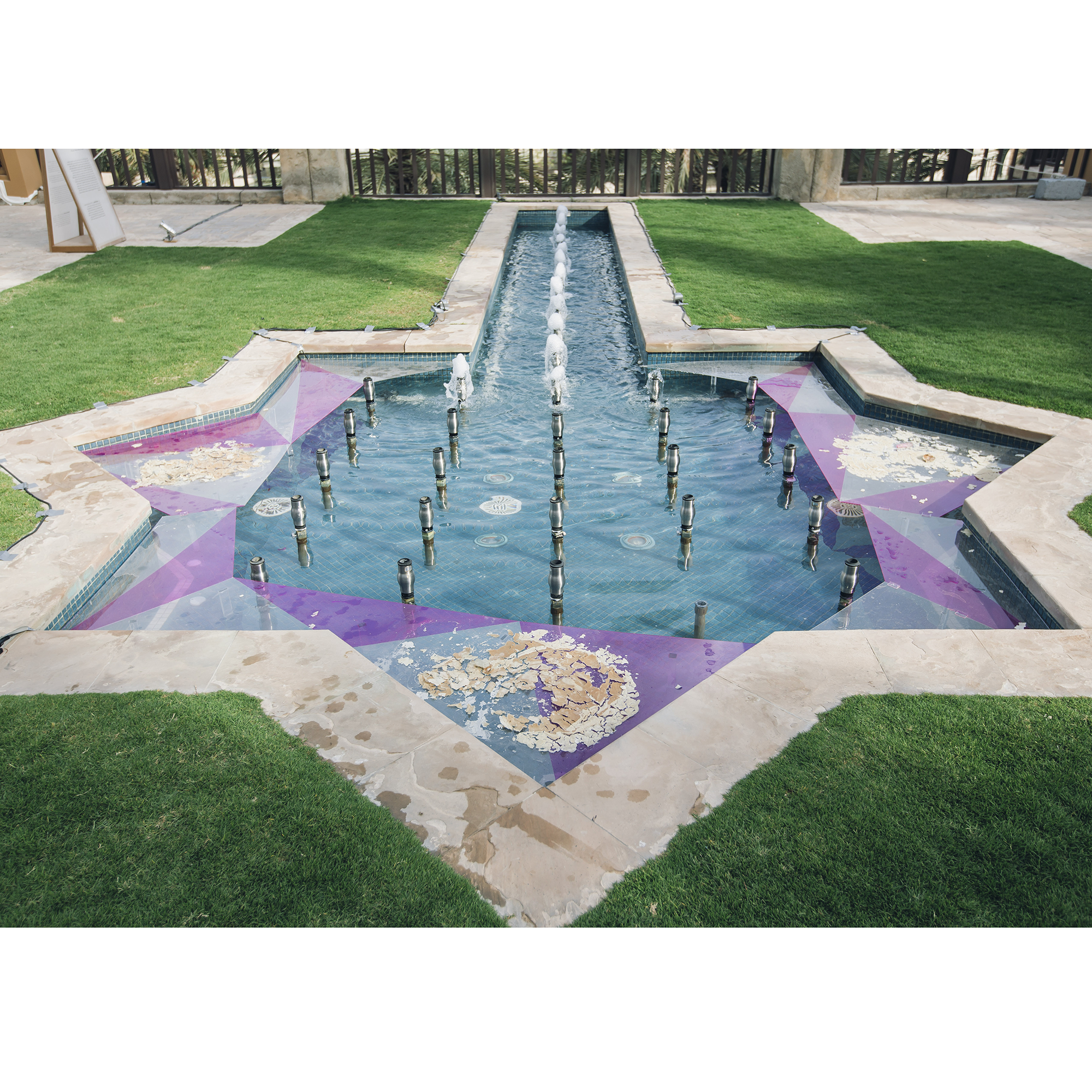Dwelling inside the belly of matter by Federica Bueti on Mehraneh Atashi’s practice
21 June 2015

 Dwelling inside the belly of matter
Dwelling inside the belly of matter
By Federica Bueti on Mehraneh Atashi’s practice
Let it grow. Let it sparkle. Let it melt. Let it go to waste.
What if the body of an artwork started developing its own metabolism? Things would behave strangely. Organic creatures grow from inert material and life leaks, melts and then solidifies in glowing nuts. This is what happens in Mehraneh Atashi’s work. Matter shakes itself free. Are you hallucinating? The artwork is not supposed to act like this - too eerie or too real.
In Atashi’s work, animate and inanimate matter is in a process of perpetual change. So she taps into the uncanny dimension of metamorphosis as well as in its delightful earthliness. Her work, The Place Where I Live (2014) for instance, resembles a rich ecosystem where life grows and proliferates in all its possible organic and inorganic forms. A pulsating organism,
its parts are made of materials such as metal, fire, water, dough, dried fruits, plastic, oil, polyester, pigments, sand, shells, glue, neon lights, varnishes, or flies. This could be the laboratory of an alchemist as well as a backyard workshop in a narrow alleyway in Tehran. There are many objects; some objects are still, others grow, ferment, oxidise, melt or coagulate. It is a self-regenerating environment carefully fostered by the artist. A lot happens in Atashi’s piece, and an equal amount takes place in the beholder’s imagination. The overall experience of the piece approximates that of being thrown inside a rumbling and gurgling belly only to discover that you were already dwelling in it, that you are part of this metabolism.
There is something tremendously seductive in the exuberance of the material world, but also uncannily striking in the ways things transform, expand and contract. Creation implies destruction, growth involves scarcity and dissolution borders on coagulation. But how do you make a universe that doesn’t fall apart in two days?
Mehraneh Atashi is concerned with this question. The artist creates environments that are material configurations of real spaces - places of wonder and emotional landscapes. What makes transformation exciting and frightening at the same time, is not so much that it happens, but what kind of changes it engenders, how they are reflected by the surrounding and how individuals struggle to hold life together, while experiencing the joy of sharing moments of intensity. The way dough responds to air or pigments, for instance, or the way in which metabolism works - a human soul does with feelings and moods. Her work, This is a surface where violence passivity and dream convert to landscape (2015) for instance, is a landscape made of yellow plastic sheets, in which polyester hands give contours to mountains and where plastic food boxes are filled with clotted sand mixed with pigments, dough, shell forming countries. What are we looking at? Atashi creates metaphoric spaces where memories solidify in objects with magical qualities, colours become living creatures, meaning flies away, dough becomes a faith, and fermentation a form of consolation. Everything seems to be in a perennial state of becoming and always already still.
What is so special about Atashi’s work is that it is dedicated to the transformative potential of things, as it is to an intense experience of the material world. In her practice, the knowledge of what things are when you work with them is coupled with a sense of what they could become, and the memories that resurface in them. Material-like memories appear, disappear and reappear again, transformed. Atashi wholeheartedly embraces the principle of perennial transformation and her practice is a joyful life-affirming philosophy.
Federica Bueti is a Berlin-based writer, curator and researcher. She is founder and editor of ...ment journal, journal for contemporary culture, art and politics.
